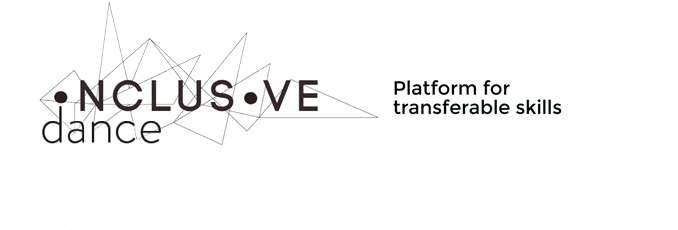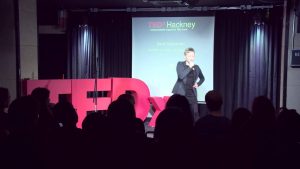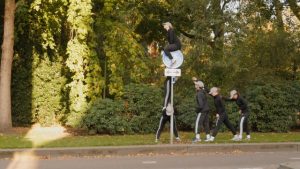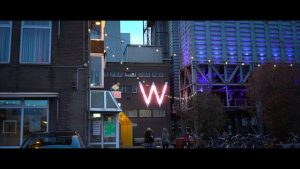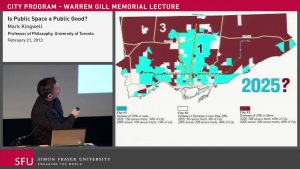In this reflection Lucie shares her process of leading the dance classes with Parkinson’s, her aims, her determinations in the beginning and how the reality formed the process gradually. In this text you can explore some of the burning questions which comes on your mind sooner or later while leading such a class.
Self reflection on leading the dance classes for people with Parkinson’s disease
Since September 2016 there are regular weekly meetings taking place on Monday of members of organization Parkinson-Help, z.s. from Český ráj together with seniors from the Club of the active seniors from Turnov. They meet together to have a dance class in frame of a project “Dancing with Parkinson”. For the introduction class there was around 20 people and during the period of 8 months the stable core of the group has now around 10 members. The oldest dancer reaches this year 91th birthday, which is a proof for me that dancing is possible in every age. The rest is attending classes irregularly according to the possibilities and how they feel in the body.
Sources and structure of the class
During leading those classes I’m using my experiences from a program The Conscious Body by Rena Milgrom, which is based on Laban’s Movement Analysis a Bartenieff Fundamentals.
In the beginning of the class we usually focus on the breathing, where I can use my tai-ji training. This work is useful later in the class, when we sing together. Singing came up very spontaneously immediately in the introduction class, where we sang together as a close up. As I knew from the training workshop, voice support is very important for people with Parkinson’s. In this context, I started to intertwine the work with the breath and the voice: sometimes we sing folk songs together, sometimes we let resonate a specific consonant during exhale, sometimes we give voice to the different breathing patterns.
Part of the class we are spending on own awareness of the body: we waken up the body through touch, we warm up the joints. We waken up even the parts of the body, which doesn’t come to movement so easily: skin of the head, ears and other forgotten parts.
We spend some time on stability issues. The seated part of the class is focused on finding the sitting bones on the chair and a good support for the spine through their right position. We are working on rooting the soles of the feet in seated position as well, to find the connection with the ground, the anchor. Through all this we are working on finding the stability in an effective, non-exhausting way.
After that we continue with the more moving part of the class, when we interconnect the gained feeling of stability with the possibilities of mobility.
Content of the classes
During classes all the movement proposals are supported by the music. Sometimes I tried having the music as a starting point and inspiration for the movement being created. My aim here would be to bring the dancers to focus on their specific movement and their own “I” in movement. That is not easy state for everybody, in the beginning we worked with closed eyes in this parts of class, with the ideas of diving into the movement and selecting their attention only to themselves. During the several month of this project I observe that the dancers are more and more easily approaching their moving “I” and how easy they can create their authentic movement. Whereas in the beginning there was a lot of shyness, with the time and growing experience the security and courage came up.
Another point of interest is the dance in the group or in the duets. We started working with mirroring the movements and from there we introduced the theme of leading the movement / following the movement of somebody. Even here I observe a big change, where the group got much more open towards those experiments. We managed to create a safe space and they are not so afraid to initiate or introduce their way of the movement activity; they are more self-aware and secure in the context of the group. Thanks to this whole new realm opened where they work with their own creative movement and they are freely bringing over the impulses and inspiration to the others; one of very favorite games is to throw and catch imaginary ball with different parts of the body.
There I just touched very important element of those classes: the work with the imagination, where we lead the movement and the body through an image. In the beginning this was very hard, unknown territory, but through the time I notice that as we work with idea of diving into own movement, as well diving into own imagination becomes easier and beautiful spontaneous dances are created.
Other elements we work in the class are for example idea of effort and recuperation, different proposals opening the theme of space (aiming the movement from one point to the other versus letting the dance determine our space use), different movement dynamics, phrasing, and so on.
Use of music
For every class I prepare a specific music list, usually a mixture of what the dancers already know and some new pieces of music. Originally I used in general slower, not very dynamic music to keep the movement easier. Not everybody was happy with that and on a request of the group I decided to bring more rhythmical and dynamic music. The class was immediately much more alive in tempo, in joy; it created a space for new unexpected movement qualities. Actually it completely influenced the development of the classes.
There was a hard point there as well: three seniors decided to stop with the class, because it was too quick for them and had a feeling that they cannot catch up with this tempo. However in general I think it was a necessary development, which opened way to new supplies of energy.
Preparation of the class
Before every class I create a frame of proposals and themes for myself. More I work with the Parkinson and senior dancers, more I observe, that the class usually goes a different direction, than I prepared. More and more I use the atmosphere of the class and specific needs of the group on specific days. I perceive I developed at this point as a leader of the class and I’m able to follow the flow in such a class, whereas in the beginning I was very nervous, if I didn’t manage to keep my determined frame and I was experiencing a bit of a failure. That was immediately mirrored on the dancers as well.
Now I’m entering a class with a bit looser frame and I observe I’m able to react easier on coming impulses and give up my prepared proposals and modify them on the spot. I find this very helpful in the class; I perceive it brought certain relaxed atmosphere to the group and different motivation.
At the same time I noticed it’s not necessary (nor effective) to change completely the material of the class. I observe, that in the moment when the known things come up again, it brings certain security and easier immersion to the proposal. I decided to always combine old and new proposals. In this way the dancers have a chance to develop themes further; according to their feedback they are surprised themselves where everywhere can one image lead to in the movement.
Favorite and problematic proposals in the class
One of the favorite proposals are proposals working on fine motor skills; it’s very well praised by both Parkinson and senior dancers. Dancers themselves are sharing with the group their experiences and proposals from physiotherapists and different videos, which is a great inspiration for the whole group and myself. A lot of dancers expressed during the feedback that those are the proposals, which come up on their mind sometimes during the day and they just exercise them for fun; some of them use certain proposals as a daily morning routine to get ready for the day; for some of them it’s a way how to stay motivated to engage their body in movement as well during the week.
During those several months I used props and objects during the class as well. We started from using the small balls, which was very useful. Later I introduced one time a djembe (= African drum) with the aim to work with fine motor skills and rhythm expression. This lead to very opposite reactions: couple of people enjoyed this work very much and couple of them couldn’t deal with it at all. Some of the dancers didn’t understand what a drum is doing in a dance class. After this experience I didn’t bring an object to the class for a long time. Luckily in last month we could use new tools for movement exercise: overballs, wooden sticks, foam balls, and so on. This time the dancers were excited about this work, so I’m looking forward to new development in this matter.
Feedback
In the beginning we were not very used to give a round of feedback after every class. People were leaving immediately. With the time, how a group developed, we started from having informal chat and nowadays the feedback round became a small ritual. Sometimes we share personal wishes, sometimes just round a feelings at the moment, once one of the dancers shared a story how she was dancing in a professional folklore group in her youth and she brought photographs. That was very strong moment for the whole group. With the first class of 2017 we spontaneously made in the end of the class a special imaginary potion cooked from our wishes to each other for the New Year; we mixed it through special movements and then drank it with our bodies.
It’s very beautiful to see how the group grew stronger during these months, the growing trust, and the joy from meeting each other again. Every week I witness how the dancers immerse more and more into dance and movement and how they come closer to the core. I’m very honored to be part of such a collective and such a project.
Let’s dance every day, even if only through a thought. I wish that to all of us.
Thank you all!
Lucie
